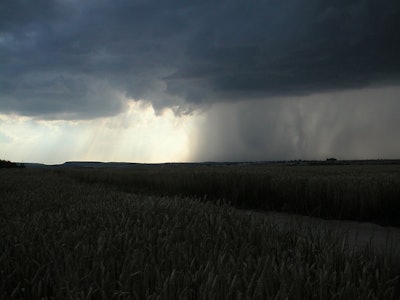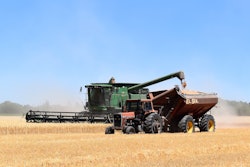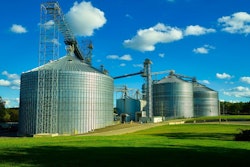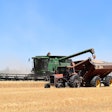
This week's headlines for Neogen's Monday Mycotoxin & Crop Report for July 10:
- Large derecho strikes the Midwest
- Much-needed rainfall in the Ohio River Valley
- Hot, dry weather in the Plains and Southeast
Weather and harvest updates
The USDA’s July 5 bulletin reports a large derecho storm brought high winds and damaged crops as it tore through central Plains states from southern Iowa to central Illinois.
The winds, which ranged from 60 to 100 miles/hour, ravaged crops in already drought-stricken areas, although associated thunderstorms brought needed rainfall in the days that followed.
Parts of the central Plains to the Ohio River Valley saw 2 to 4 inches of rain. Much of the Southwest through Texas experienced little to no rain in the same period, and the southern Plains to the Southeastern states also experienced temperatures averaging 5 degrees above normal. Soil conditions in these regions remain adequate for developing crops.
- Wheat harvest continues as crop maturity advances.
- Winter wheat harvest is 37% complete, 9 points behind the five-year average; 40% of acres are in good to excellent condition, 9 points above last year.
- 51% of spring wheat acres are headed, 5 points above the five-year average; 48% are in good to excellent condition, 18 points behind last year.
- Barley is 37% headed, 10 points behind the five-year average. 51% of barley is in good to excellent condition, 8 points behind last year.
- Oat acres are 78% headed, 3 points behind the 5-year average.
- Corn development is highly variable within some fields.
- 8% of corn is silking, one point below the five-year average. Nationally, 51% of corn is in good to excellent condition, 13 points behind last year.
Here are the states with the highest good to excellent ratings, as well as the states with the highest poor to very poor ratings.
Good to excellent: CO, TN
Poor to very poor: IL, IN, KS, MI, MO, NE, NC, PA, SD, WI
Mycotoxin reports
Because producers are still pulling grain from last year’s harvest out of storage, it’s important to be aware of the potential mycotoxin risk in stored grains.


















